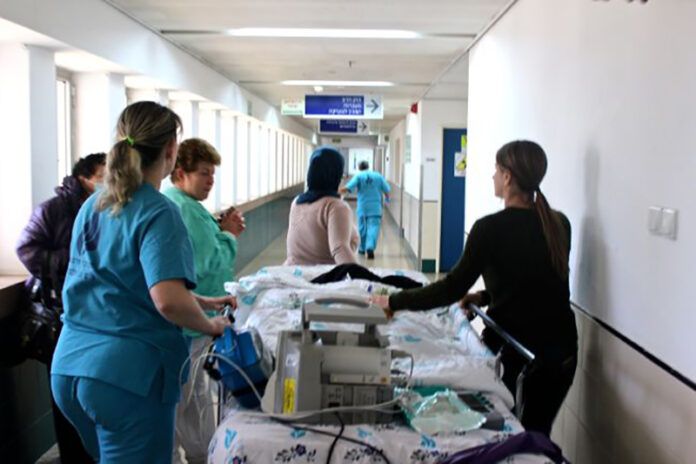By: Won Gun Kwack, MD,a,b Miae Yun, RN,b Dong Seon Lee, RN,b Hyunju Min, RN,b Yun Young Choi, RN,bSung Yoon Lim, MD, PhD,a,b Youlim Kim, MD,a,b Sang Hoon Lee, MD, PhD,a Yeon Joo Lee, MD,a,b Jong Sun Park, MD, PhD,a and Young-Jae Cho, MDa,b,∗
Published: National Center for Biotechnology Information, U.S. National Library of Medicine
Date: November 20, 2018
Critically ill patients inevitably experience a considerable number of intrahospital transportations (IHTs) for their diagnostic examinations or therapeutic interventions,[1] with previously reported out of intensive care unit (ICU) transport rates of 22.5% to 52.4%.[2–4] During IHT, patients may be unstable, and these situations can result in various harmful clinical outcomes or medical errors and even cause severe critical events such as death. Previous studies revealed that the overall incidence of adverse events ranged from 20% to 79.8%, of which serious adverse events requiring therapeutic intervention range from 4.2% to 8.9%.[5–7]
The most obvious way to reduce the risk related to IHT is reducing IHT itself. However, in practice, patient transportation cannot be completely avoided because all diagnostic and therapeutic procedures could not be done at the bedside. Moreover, 26.7% of IHT also changed their treatment plan.[8] Therefore, understanding risk factors associated with complications related to IHT is important to guarantee the benefit of IHT and to determine appropriate solutions.
Among many factors affecting as the risk of adverse events in IHT, 4 categories have been considered: patient state, equipment, transport indication and organization, and composition of transport team.[9] As the perception on the risks of IHT is increasing, developing standard care system such as precheck list and homogenization of implemented modalities has partly contributed to the reduction in the incidence of adverse events. Unfortunately, data on pre- and interhospital transportation are merely available; however, data on IHT are extremely limited.
This study focused on the transport team member’s level of competence on the possible risk factors. We elucidated whether IHT in critically ill patients accompanied by the rapid response team (RRT) including well-trained-nurses influenced patient’s safety outcomes by comparing them with those transport by general members.
A retrospective cohort study was conducted on respiratory failure patients under mechanical ventilation who were admitted in medical ICU in a tertiary academic hospital, from January 2016 to February 2017. All IHTs for diagnostic and therapeutic purposes supported by RRT or general members were analyzed based on the electronic medical record. Patients without endotracheal tube and tracheostomy tube and with lack of clinical information were excluded. When several time transports were performed during a single hospital stay, only the 1st time transport was included. Subjects transported to other departments, such as general ward or other ICUs after achieving transport goal, were excluded. Subjects transported to the operating room were also excluded because patient monitoring and management was taken over by different medical staffs. The transport and composition of transfer team were decided based on the judgment of the attending intensivist depending on patient condition. General members consist of interns or residents with transport assistants who supported patient’s bed upon IHT and use a manual resuscitator, whereas RRT includes well-trained nurse in addition to general members and use of a portable ventilator (Hamilton-C1; Hamilton medical Inc, Bonaduz, Switerland). In all transports, the number of RRT and general group members were 3 and 2, respectively.
Our hospital has operated with rapid response system (RRS) since October 2012. RRS team has a role to timely detect and manage deteriorating patients in general wards by screening systems and direct calling for request. The RRS team is composed of physicians and well-trained nurse with >5 years of ICU experience and the completion of critical care nursing process. We hold weekly meetings for case and journal reviews to educate RRS members. Our RRS has been reported to reduce the number of cardiopulmonary arrests.[10] RRS nurses were in charge for IHT in suspected unstable patients, upon request.
The duration of IHT was defined as the whole duration from departure to return to the ICU including that spent in diagnostic and therapeutic procedures. This study’s outcomes were the number of adverse events. The adverse events were one of the following situations: cardiopulmonary resuscitation, physiologic parameter change that urgently need intervention by the transport team; hypotension or hypertension (≥20% change from pretransport), bradycardia or tachycardia (≥20% change from pretransport) and desaturation (≥5% reduction in pulse oximeter saturation); irritability requiring sedation drug; endotracheal tube or tracheostomy tube dislodgement; and dislodgement of central or peripheral line. Other data including age, sex, comorbidities, type of transport (diagnostic/therapeutic), destination, requiring transport time, pretransport vital sign and laboratory values, acute physiology and chronic health evaluation (APACHE) II within 24 hours after ICU admission, inotropes or sedatives required, and ICU length of stay before transport were recorded. The Institutional Review Board (IRB) of Seoul National University Bundang Hospital approved the study protocol (IRB no: B-1709-423-103) and which waived the need for informed consent because of the retrospective study design in accordance with the Declaration of Helsinki.
Source: https://www.ncbi.nlm.nih.gov/pmc/articles/PMC6283106/
Image: https://www.gospelherald.com/data/images/full/15402/israel-hospital.jpg
Analysis:
The significance of the article outlines the complications that arise when varying teams switch between patients when being transported on a ventilator. Based upon subjective judgment calls, the following nurses and other personal will make adjustments without receiving and understanding the information and data observed from the previous group of nurses etc. As mentioned the four main categories that contribute to patient issues include patient state, equipment, transport indication and organization, and composition of transport team. All of the present variables must consider the subject(s) of the patient and the ventilator. If the condition of the patient is unclear to all medical staff that will soon be responsible then the remaining actions will not be based on the best decision making. This ultimately provides insight to the type of information displayed and the manner in which it is displayed, as well as overall time and efficiency of individuals handling and monitoring patients.




